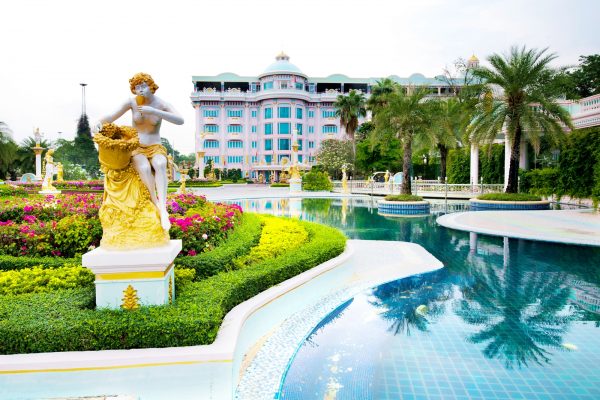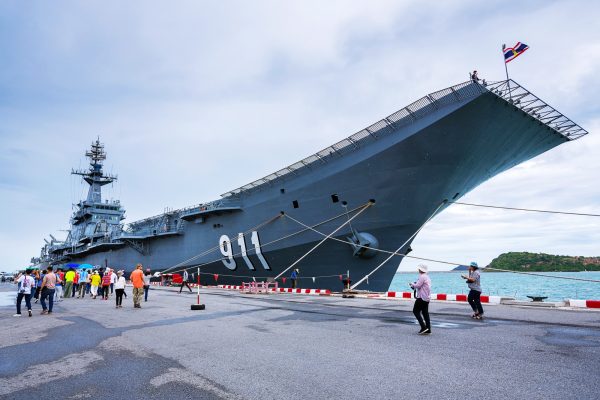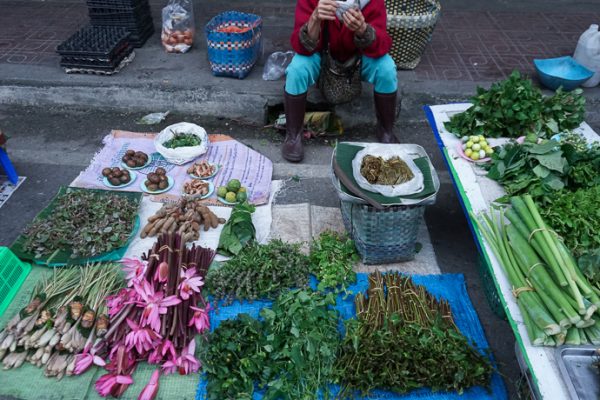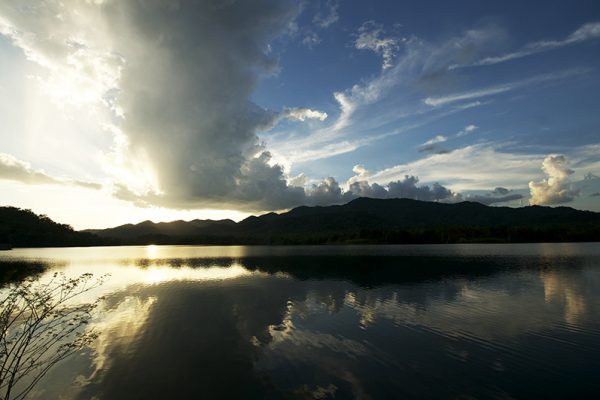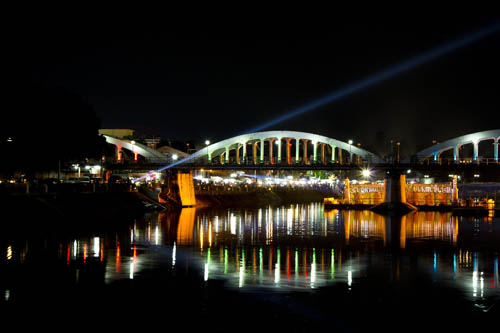
Ratchadapisek Bridge
Ratchadapisek Bridge (or the white bridge) is located on Ratchada Road, Amphoe Muang. Originally, it was a wooden bridge that the ruler of Lampang old city “Chao Noranan Chaichaowalit” together with his citizens had built to commemorate Phrabat Somdet Phra Chula Chomklao Chaoyuhua (King Rama V)’s Anniversary of his 25th year Accession to the Throne in 1894. The bridge was considered the biggest bridge in Thailand, since it was 120 meters long. Assuming that the name “Ratchadapisek” has come from the purpose of its construction to offer the bridge as a memorial for King Rama V’s Accession to the Throne Ceremony. The king himself had bestowed the name “Ratchadapisek” to this bridge as well. Ratchada Bridge has collapsed, then renovated 3 times since it could not tolerate the collision from a large number of logs during the flood season. The first time, it fell in 1901. The second time, it was built in iron-wood structure. No evidences of the finishing date were found, only some proof from Krom Yotathikarn (Public Work Department) showed that Phra Chao Lookyater Krommuen Nakornchaisi Suradech had presided over the Bridge Opening Ceremony on January 17th 1905. The second bridge collapsed in 1915. For the third round of the construction, engineers from Ministry of Transportation viewed that it must be built by concrete for a long-term solid structure. King Monkut (King Rama VI) agreed on its third-round construction. Therefore, Ratchadapisek Bridge was completely finished in 1917. Ratchada Bridge is a contemporary bridge that merges the present and the glorious train era. It has witnessed world war I, and world war II. Importantly, the bridge has survived through bombing of the Allies by camouflage painting, and by the claim of Mrs. Lucy Scarling (the former director of Wicha Naree School, and Adviser of the Allies), who affirmed that the bridge had no significance as a strategic point for the country. Ratchadapisek is an iron-concrete bridge painted white, looking outstandingly attractive with 4 bow-shaped curves. It stands tall on Mae Wang river as a landmark of Lampang until nowadays. Once arrive at Wat Pong Yang Khok, the ubosot can be seen immediately. The building is relatively new. The Phra Mae Chao Chamdhevi Vihan is an important attraction at the temple. The vihan is not large compared to those of other temples. The building houses an ancient mondop which was built during the same period. Inside the mondop is situated a statue of Phra Mae Chao Chamdhevi, to which Lampang people always come pay respect. As history goes, Phra Mae Chao Chamdhevi, Queen of Hariphunchai (Lamphun) came to visit her son, King Anantayod, who was the governor of Lampang. During the trip to Phra That Lampang Luang for gold offering, the royal elephant all of a sudden stopped and bowed down. The queen was amazed and decided to past a night at the spot. During the night, she prayed for miracle to happen provided that the place was dwelled with holy spirits. As soon as her words ended, a bright halo of Buddha relics radiated from an anthill. The queen then had a vihan built at the hill, together with the mondop, singha statues, Gu Jang Nop (Elephant Bowing Vihan) and an arch entrance. The Sasi Tree (the Great Bodhi Tree) was also planted. The temple was name ‘Wat Pong Jang Nop’ which, after hundreds of years, became ‘Wat Pong Yang Khok’ as known in the present. Wat Pong Yang Khok received the 2000 award of outstanding preservation from Her Royal Highness Princess Maha Chakri Sirindhorn at the ‘Artchitect ’00’ event. ichong_np13@hotmail.com, eserve@dnp.go.th

